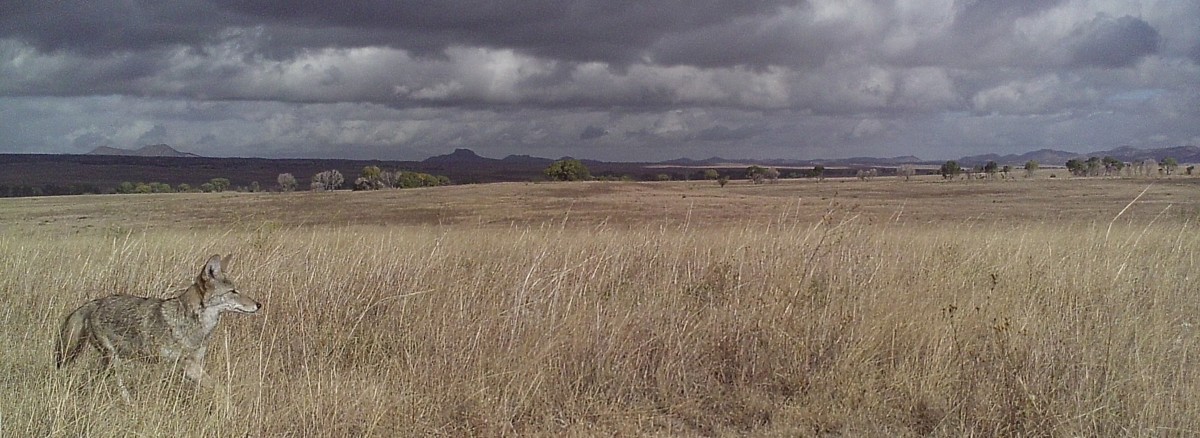Sky Island Alliance documents the current condition of border habitats, water sources, and wildlife in southeast Arizona and northern Sonora. We use this data to develop habitat recovery projects and inform border policy. Many of these efforts need volunteers, so explore the pages linked below to learn how to help!
Border Wildlife Study
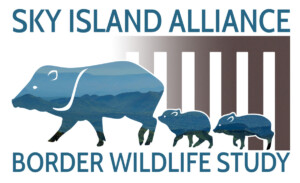
Our Border Wildlife Study documents the remarkable wildlife community living along 30 miles of the U.S.-Mexico border. An array of 58 cameras began rolling on both sides of the border in March 2020, a few months before border construction raised new wall in the Huachuca Mountains and bladed new access roads in the Patagonia Mountains. Even after construction activities paused, our cameras kept watch to understand how wildlife respond to the remaining gap in the wall across the San Rafael Valley, where species like mountain lions, black bears, porcupines, and pronghorns can still move between Sonora and Arizona.
Spring Seeker
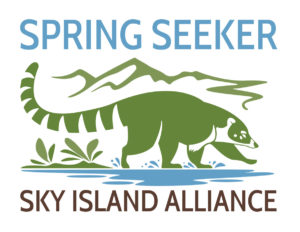
Water is scarce along the border. Springs are places where water emerges from the ground and is available for wildlife, plants, livestock, and people. Although some springs have been known to people for millennia, we’re collecting information on current conditions and highlighting the ones with the highest conservation value. Since the program began in 2020, we’ve surveyed more than 900 springs across the region. And we’ve seen how important springs are for plants and animals during fire, drought, and climate change. We look forward to learning more and protecting these sensitive sites.
Dark Skies Measurements
Dark skies are a remarkable feature of our region. When true darkness blankets the landscape, it provides us with a spectacular view of the stars. For wildlife in the Sky Islands, darkness means perfect conditions for hunting, foraging, and migrating.
If installed, border lighting will disrupt the health of many species. Our Border Wildlife Study has found that 70% of mammal detections occur at night. And many other species like birds, rodents, insects, and reptiles are also active at this time, using the cover of night to their advantage. So just as we seek to protect wildlife habitats from damaging border wall construction, we must also advocate for no border lighting.
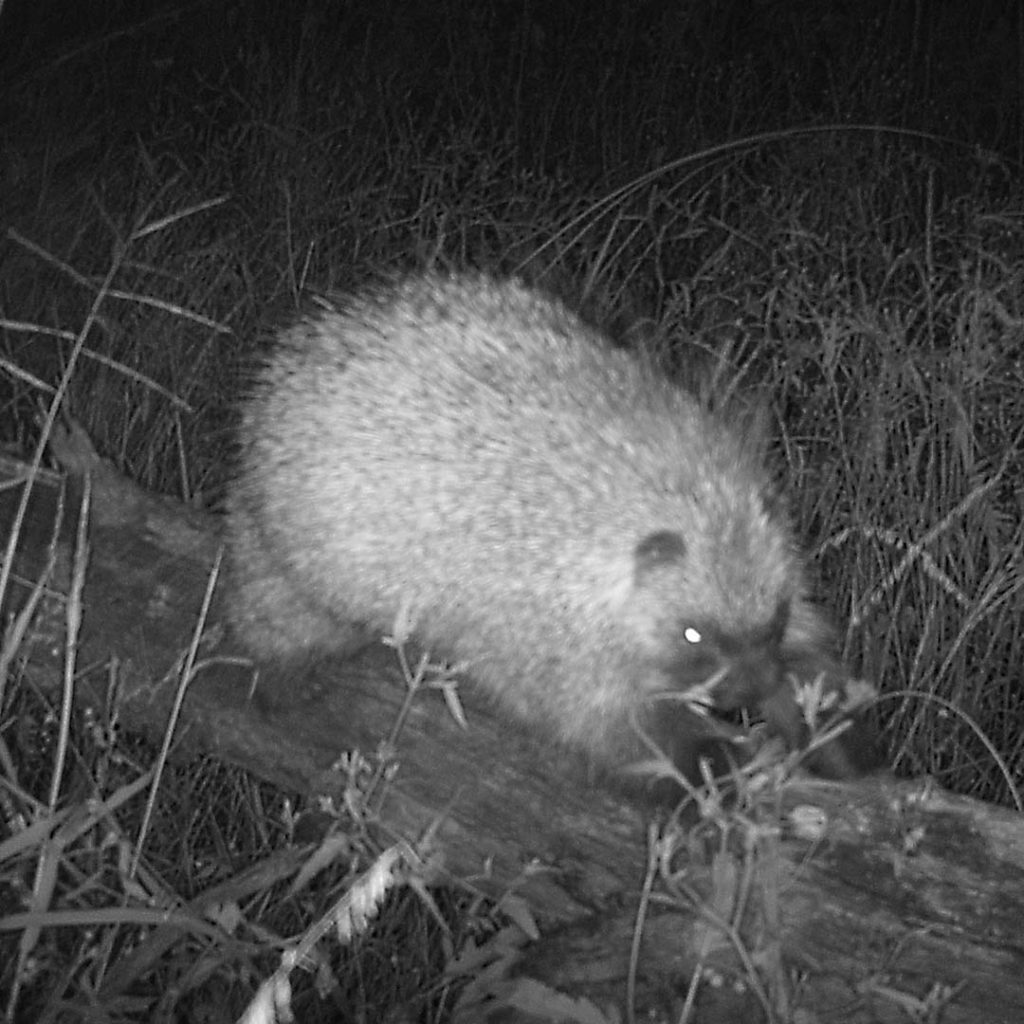
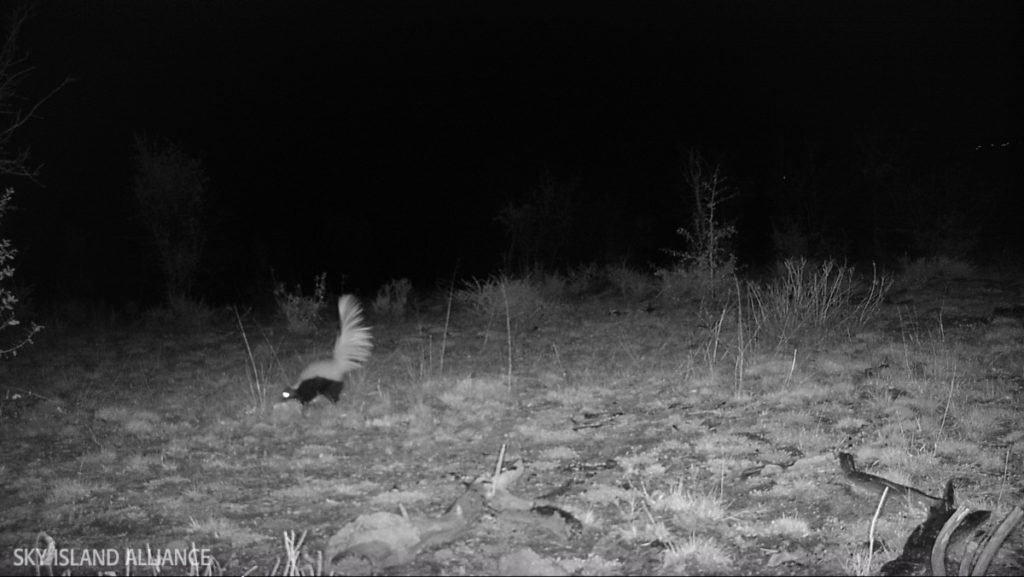
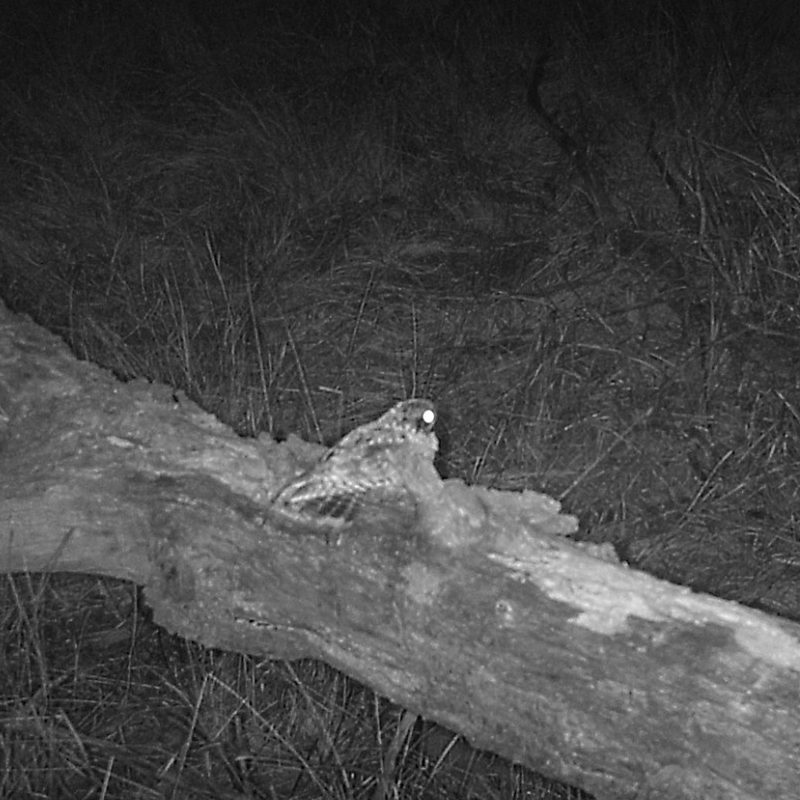
In April 2020 Sky Island Alliance staff and volunteers partnered with the Globe at Night project to map light pollution along the U.S.-Mexico border. We took stellar-magnitude readings of the night sky at points between the border cities of Nogales and Douglas, Arizona, along a stretch of 84 miles. Using both a sky-quality meter and visual assessments of how many dim stars were visible in the constellation Leo, we were able to take measurements and map out where light pollution is and isn’t affecting nighttime environments.
Early findings from this effort include:
- City lights and border wall lights (especially around Douglas and Naco in Arizona and around Nogales in Mexico) created significant light pollution.
- Our Border Wildlife Study site itself was largely protected from sky glow cast by cities to the west of the Patagonia Mountains and to the east of the Huachuca Mountains. It was also mostly free of light from border infrastructure. However, that could change soon with plans currently in place to add lighting.
- Half of the mammal species we’ve detected through our Border Wildlife Study have only been seen at night, indicating that light pollution from border infrastructure could harm most mammal species in the area.
Protecting dark night environments is an important aspect of the conservation work we do at Sky Island Alliance. We will continue to advocate for no border lighting so wildlife can live their lives without interruption.
Support Border Research & Recovery
Additional Resources
- University of Arizona, UC3: Story Map on Water in Arizona Borderlands (May 2022)
- Wildlands Network: Story Map on Border Wall (July 2021)
- Border Coalition: Stopping the Border Wall: Criteria and Priorities for Conservation and Restoration (February 2021)
- Washington Office on Latin America: What Lies Ahead for Stopping Trump’s Border Wall and Fixing the Damage (February 2021)

